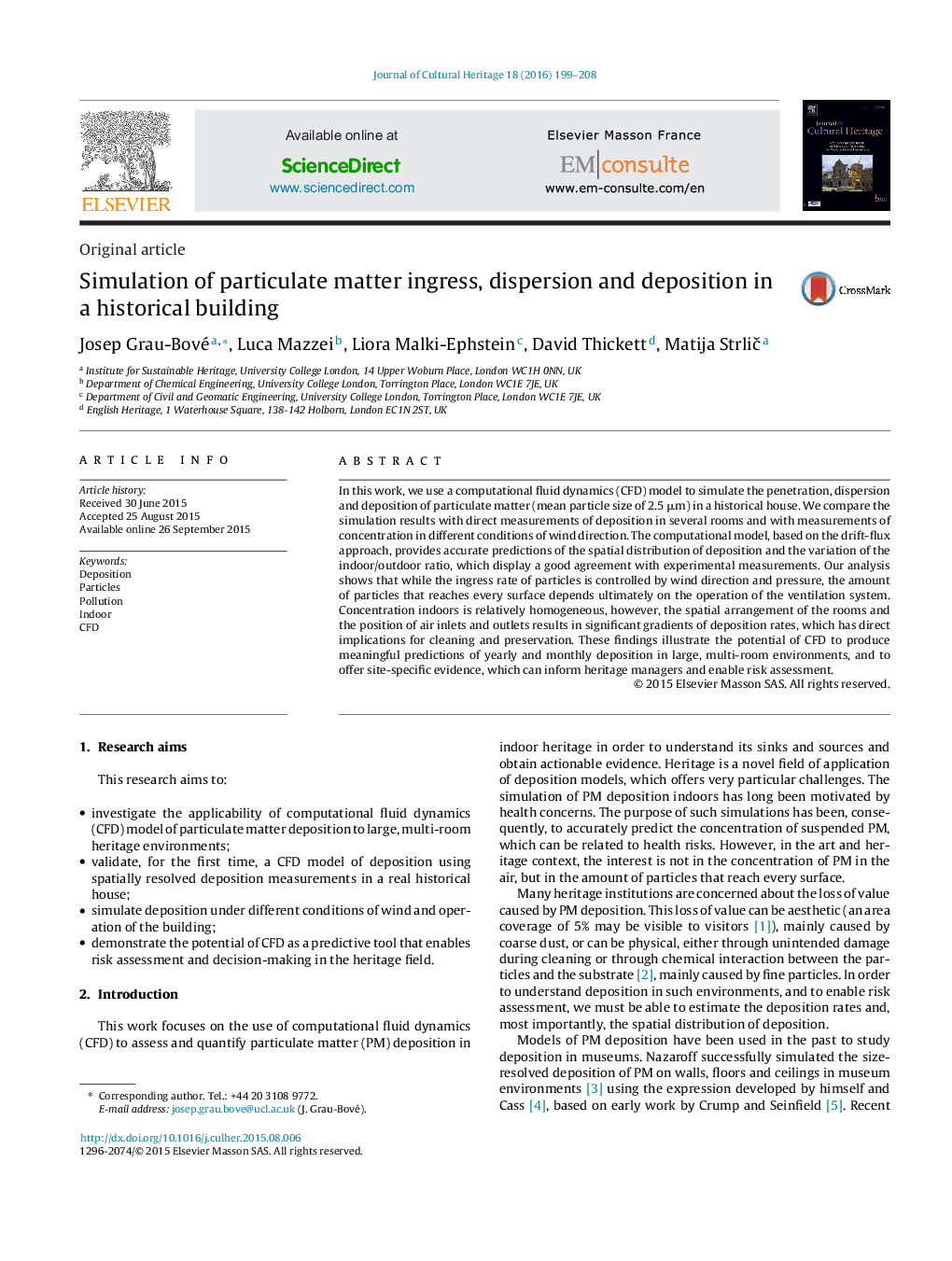| Article ID | Journal | Published Year | Pages | File Type |
|---|---|---|---|---|
| 1037885 | Journal of Cultural Heritage | 2016 | 10 Pages |
In this work, we use a computational fluid dynamics (CFD) model to simulate the penetration, dispersion and deposition of particulate matter (mean particle size of 2.5 μm) in a historical house. We compare the simulation results with direct measurements of deposition in several rooms and with measurements of concentration in different conditions of wind direction. The computational model, based on the drift-flux approach, provides accurate predictions of the spatial distribution of deposition and the variation of the indoor/outdoor ratio, which display a good agreement with experimental measurements. Our analysis shows that while the ingress rate of particles is controlled by wind direction and pressure, the amount of particles that reaches every surface depends ultimately on the operation of the ventilation system. Concentration indoors is relatively homogeneous, however, the spatial arrangement of the rooms and the position of air inlets and outlets results in significant gradients of deposition rates, which has direct implications for cleaning and preservation. These findings illustrate the potential of CFD to produce meaningful predictions of yearly and monthly deposition in large, multi-room environments, and to offer site-specific evidence, which can inform heritage managers and enable risk assessment.
